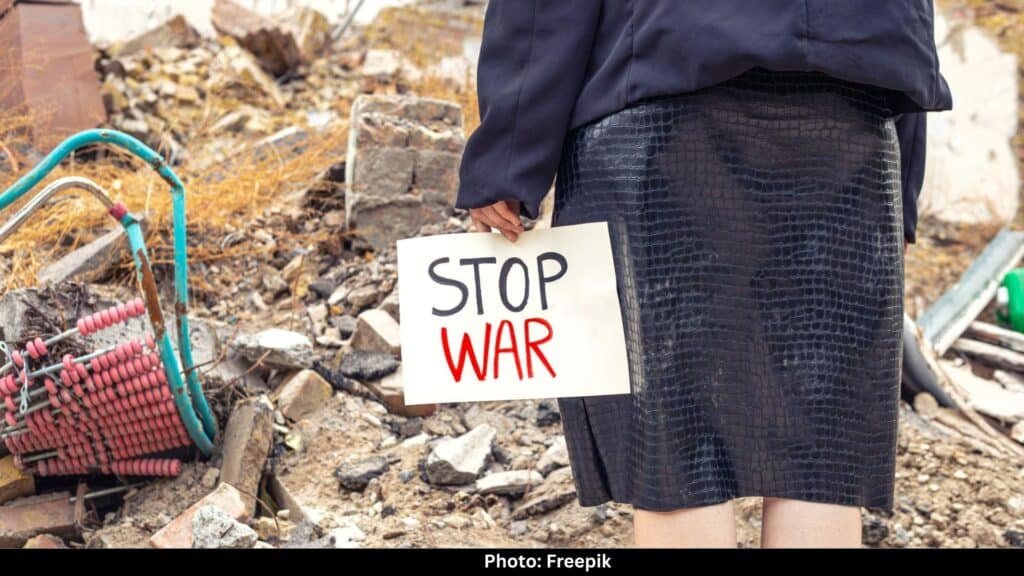The Israel–Palestine conflict is one of the most deeply rooted and complex disputes in modern history. It is not a recent quarrel but a layered struggle that intertwines history, religion, land, and identity. At its heart lies the question of who has the rightful claim to the land between the Jordan River and the Mediterranean Sea—territory that both Jews and Palestinians see as their homeland. Over the decades, this struggle has triggered wars, mass displacement, international interventions, and cycles of violence that continue to shape global politics.
Ottoman Palestine and the British Mandate
For more than four centuries, from the early 1500s until the First World War, Palestine was part of the Ottoman Empire. The region was ethnically and religiously diverse, home to Arabs (both Muslim and Christian), and a small Jewish population. Life under Ottoman rule was far from perfect, but the area retained a relatively stable demographic balance.
That changed dramatically after World War I. The Ottoman Empire, having sided with Germany, collapsed after its defeat. In 1920, the League of Nations handed Britain the mandate to administer Palestine. This British Mandate period would prove decisive, sowing seeds of a conflict that still rages today.
The Rise of Zionism and the Balfour Declaration
In the late 19th century, amid rising antisemitism and violent pogroms in Europe and Russia, the Zionist movement emerged. Its goal was clear: to create a national homeland for Jews in Palestine. Although Jews had historic ties to the region, they were still a minority there. The movement gained momentum after the British government issued the Balfour Declaration in 1917, pledging support for “the establishment in Palestine of a national home for the Jewish people.”
To many Jews, this was a lifeline, especially after centuries of persecution. To the local Arab population, however, it felt like betrayal. Palestinians, who formed the overwhelming majority, saw it as a threat to their existence and political rights.
World War II, the Holocaust, and the Road to Israel
The Second World War changed everything. The Holocaust, in which six million Jews were murdered by Nazi Germany, created a desperate urgency for survivors to find safe refuge. Many turned to Palestine, fueling both Jewish immigration and Arab resentment.
By 1947, Britain, exhausted by constant clashes between Jews and Arabs, handed the matter to the United Nations. The UN proposed partitioning Palestine into two states: one Jewish and one Arab. The Jewish leadership accepted the plan, but Arab leaders rejected it, arguing that it unfairly favored the Jewish minority by giving them 55 percent of the land despite their smaller population.
On 14 May 1948, David Ben-Gurion, head of the Jewish Agency, declared the establishment of the State of Israel. Within hours, armies from Egypt, Jordan, Syria, Lebanon, and Iraq invaded. This was the first Arab-Israeli war.
The Nakba – Catastrophe for Palestinians
For Israelis, 1948 was the year of independence, the miracle of statehood after centuries of statelessness. For Palestinians, it was the Nakba, or catastrophe. Around 700,000 Palestinians fled or were forced out of their homes, becoming refugees. More than 400 villages were depopulated or destroyed.
When the war ended, Israel not only survived but expanded beyond the UN’s proposed borders. Its territory grew from 14,000 square kilometers to over 20,000, including West Jerusalem. Palestinians were left without a state, their land carved up between Israel, Jordan (which took the West Bank), and Egypt (which took Gaza).
The Law of Return and Mass Immigration
Israel wasted no time consolidating itself. In 1950, it passed the Law of Return, granting every Jew worldwide the right to immigrate and gain Israeli citizenship. In the years that followed, waves of Jewish immigrants arrived—from Holocaust survivors in Europe to Jews expelled or pressured to leave Arab and Muslim countries. Between 1948 and the early 1970s, roughly 850,000 Jews fled or were forced out of Arab states, with the majority resettling in Israel.
This policy dramatically altered Israel’s demographics, ensuring a Jewish majority, while Palestinians remained stateless and scattered across refugee camps in Lebanon, Jordan, Syria, and beyond.
The Six-Day War and Occupation
The next defining moment came in June 1967. In just six days, Israel fought Egypt, Syria, and Jordan—and won a sweeping victory. Israel captured the Sinai Peninsula and Gaza from Egypt, the West Bank and East Jerusalem from Jordan, and the Golan Heights from Syria.
This victory quadrupled the territory under Israeli control—from about 20,000 square kilometers to nearly 88,000. But it also marked the start of a long occupation that would fuel decades of tension. Almost immediately, Israel began building settlements in these occupied areas, despite international law declaring them illegal.
By the late 1970s, settlements had spread across the West Bank and Gaza. For Palestinians, this expansion was a stark reminder that their dream of statehood was slipping further away.
Land Under Control
The territorial shifts were staggering:
- From Egypt: 61,000 sq km (Sinai) plus 365 sq km (Gaza).
- From Jordan: 5,640 sq km (West Bank and East Jerusalem).
- From Syria: 1,200 sq km (Golan Heights).
Israel’s landholdings had grown to four times its original size.
Later agreements rolled some of this back. Under the 1979 Camp David Accords, Israel returned Sinai to Egypt, restoring peace between the two nations. In 2005, Israel withdrew its soldiers and settlers from Gaza, though it kept strict control over its borders and airspace.
Still, Israel formally annexed East Jerusalem and the Golan Heights, moves that remain unrecognized internationally.
Settlements and the Changing Map
Today, Israel’s recognized territory stands at about 20,770 square kilometers, the borders reached after the 1949 armistice. But in practice, Israel controls much more—around 27,000 to 28,000 square kilometers when you count the occupied territories.
In the West Bank and East Jerusalem, settlement expansion continues despite international condemnation. More than 700,000 Israelis now live in these areas: around half a million in the West Bank and another 220,000–230,000 in East Jerusalem. Every new settlement makes the map of a future Palestinian state look less viable.
International Law and Repeated Stalemates
Under international law, particularly the Fourth Geneva Convention, transferring civilians into occupied territories is illegal. The United Nations has passed dozens of resolutions declaring Israeli settlements unlawful, but Israel, backed by strong allies such as the United States, has largely ignored these rulings.
Negotiations—whether in Madrid, Oslo, Camp David, or Annapolis—have failed to resolve the core issues: borders, refugees, security, and the status of Jerusalem. Each failed attempt has been followed by fresh cycles of violence, from the First and Second Intifadas to the repeated wars in Gaza.
A Conflict Still Burning
Nearly 80 years after Israel’s creation, the conflict remains unresolved. For Israelis, their state represents survival, security, and the return to an ancient homeland. For Palestinians, it represents dispossession, occupation, and an unfulfilled promise of independence.
The contradictions are stark: one people celebrating liberation, the other mourning catastrophe. One state thriving with modern cities and global recognition, the other struggling with statelessness, checkpoints, blockades, and refugee camps.
The Israel–Palestine conflict is not just about borders drawn on maps—it is about identity, dignity, and memory. And until both peoples feel secure in their rights to exist, the shadow of this century-old struggle will continue to loom over the Middle East and beyond.
Read More: Mao Zedong: A Leader Who Never Brushed His Teeth, Shocking Habits of China’s Most Powerful Leader




